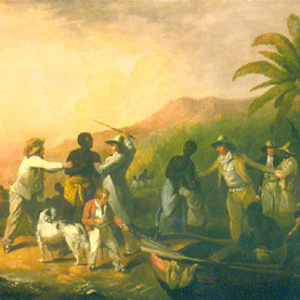Family Life
Ferreyra Sons v. Pedro Sueldo
After the Rosas regime ended in 1852, hundreds of families throughout Argentina hoped to make claims on property and wealth that had been taken away from them during the Rosas years. However, many heads of these families were elderly or deceased.
How the Aztec (Nahua) Raised Sons as Warriors
Franciscan friar Bernardino de Sahagún recorded this text in the mid-16th century as part of an effort to gather information about native Aztec history and customs. Sahagún went to Mexico in 1529 as one of the first missionaries assigned to the newly conquered territory of New Spain.
Advice of an Aztec Father to His Sons
Franciscan friar Bernardino de Sahagún recorded this text in the mid-16th century as part of an effort to gather information about native Aztec history and customs. Sahagún went to Mexico in 1529 as one of the first missionaries assigned to the newly conquered territory of New Spain.
Orphan Records, Early Modern France
Much of early modern Europe saw increasing numbers of abandoned children, and new institutions designed to care for them. Published notarial documents, such as the two excerpted here, allow a glimpse into the fortunes of individual orphaned children in early modern Europe.
Request: Playden Onely to the Royal African Company, 1721
This excerpt is of a request made by Playden Onely to the members of the Royal African Company in 1721 for 130 children to be taken from West Africa to the West Indies for sale as slaves. The RAC commissioned the slave ship Kent for the task, and the operation was a success.
Hymn for the Festival of Marriage
Although festivals drew much smaller audiences during the final years of the Revolution, the government continued to celebrate them. Now, however, they tended to commemorate apolitical events: thus a festival, and hymn, devoted to the subject of marriage.

Louis XVI and His Family (20 January 1793)
Not shown in this or other scenes here is the fact that between the King’s two visits he ate a last meal. At this time he was denied, as was custom, a knife to avoid suicide. Louis was angered that his jailers thought he was so sinful as to take his own life.

Last Meeting of Louis XVI with His Family at the Temple Prison
Another version of the final meeting of the King with his family. To the left is his confessor; the figure to the right is most likely Cléry, the King’s valet.

Louis Leaves His Family
What links the many scenes we have of the King and his family is the modern sensibility on display in all of them. Of course, since dates are uncertain, we must assume that several images hail from the nineteenth century. Yet all confirm the sentimentality that the twentieth century so embraces.

Execrable Human Traffick, or The Affectionate Slaves
This reproduction of a painting by George Morland (1789) has lurid colors and shows the sale of an enslaved person.